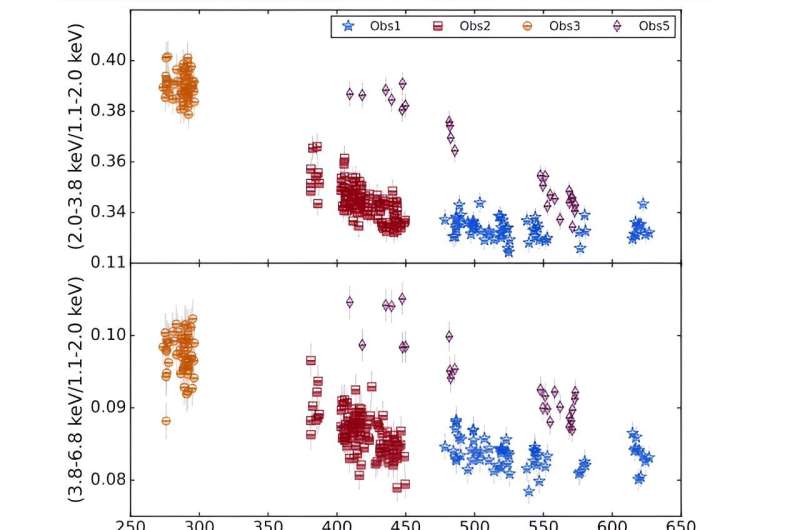September 7, 2023 report
This article has been reviewed according to Science X's editorial process and policies. Editors have highlighted the following attributes while ensuring the content's credibility:
fact-checked
preprint
trusted source
proofread
Astronomers inspect an ultracompact X-ray binary system

Using the Nuclear Spectroscopic Telescope Array (NuSTAR) spacecraft and the Neutron star Interior Composition Explorer (NICER) instrument onboard the International Space Station, astronomers have inspected an ultracompact X-ray binary known as 4U 0614+091. Results of the observational campaign, published Aug. 29 on the pre-print server arXiv, yield important insights into the behavior of this system.
X-ray binaries (XRBs) are composed of a normal star or a white dwarf transferring mass onto a compact neutron star or a black hole. Based on the mass of the companion star, astronomers divide them into low-mass X-ray binaries (LMXBs) and high-mass X-ray binaries (HMXBs).
Ultracompact X-ray binaries (UXRBs) are a class of LMXBs with a significantly shorter orbital period, below 80 minutes, compared to "typical" LMXBs, which have periods of at least a few hours. Such short orbital periods of UXRBs mean that they harbor white dwarf or helium burning star donors.
Given that ultracompact X-ray binaries are persistent gravitational wave sources and excellent probes of compact objects physics, a team of astronomers led by David Moutard of the Wayne State University in Detroit, Michigan, decided to explore the properties of one UXRB named 4U 0614+091. This system, first identified in 1975, has an orbital period of around 50 minutes and its donor star is assumed to be a white dwarf.
"The source was observed on five occasions with NuSTAR, four of which were performed simultaneously with NICER," the researchers wrote in the paper.
4U 0614+091 exhibits quasi-periodic flux variations on the timescale of a few days. The observations found that the flux of the reflected emission, as well as the flux of the thermal, trend positively with the overall flux of the system. However, the flux of the power-law component, representing the emission from the corona, trends in the opposite direction.
Moreover, the astronomers measured a slight disk truncation in 4U 0614+091 (from 6 to 11.5 gravitational radii) during the lowest flux observation. This disk truncation is analogous to what is usually observed in LMXB systems containing a black hole.
The observations also found that when the flux of the illuminating component in 4U 0614+091 is maximal, the minimum amount of reflected emission is seen. The authors of the paper noted that a truncated disk can explain this discrepancy, due to the fact that the inner disk is further from the illuminating corona.
However, the researchers added that more studies of 4U 0614+091 are required in order to fully understand the behavior of this system.
"Future observations are needed to completely understand what the driver of flux variation is, as well as understanding the truncation of the accretion disk and its relation to the spectral state of the source," the scientists concluded.
More information: David Moutard et al, Simultaneous NICER and NuSTAR Observations of the Ultra-compact X-ray Binary 4U 0614+091, arXiv (2023). DOI: 10.48550/arxiv.2308.15581
Journal information: arXiv
© 2023 Science X Network



















